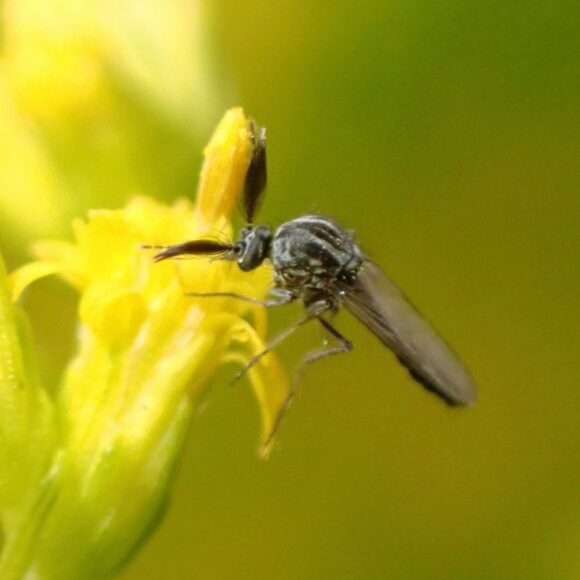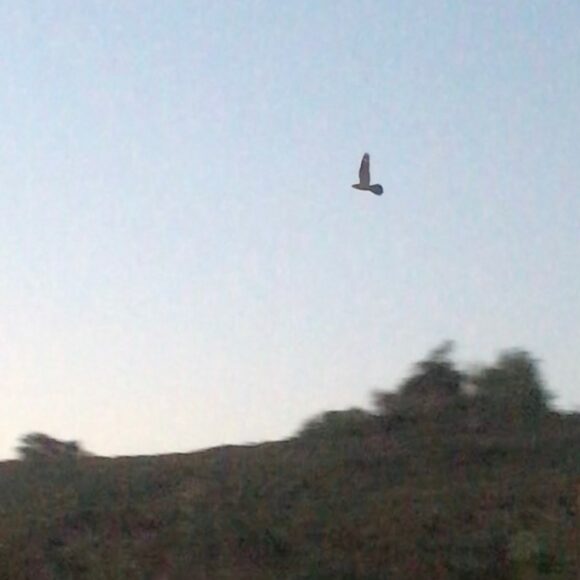
Lookwild: On the Nightshift
-
Date posted: 30/07/2024
-
Time to read: 8 minutes
One of the joys of my job is working with young people and helping them to connect with nature. The other night I was lucky enough to help our Engagement Ranger to deliver a Dartmoor Youth Rangers session surveying the woods for nightjar, an enigmatic bird. We gathered in the car park of a local woodland on a perfect summer’s evening. It was a welcome change from the months of rain that have impacted many of our activities!

The midges
As we waited for everyone to arrive there was one small frustration: the midges. Clouds of them, forming rippling shadows around each one of us. And slowly one by one each of us began to zip and button up our clothing, don hats and hoods and trade in various repellents to keep the midges from biting so that only our eyes were on show.
The midges themselves are fascinating. The larvae live in wet, damp peaty soils – our upland moors are the perfect habitat and they love warm damp springs. The overwintering larvae lives in the soil feeding on rotting plant material. It then pupates and emerges in late spring. On still, humid days, as the sun goes down, the males gather in clouds hoping to attract a female. When they do, they tumble out of the cloud to mate. It’s the female that bites – she needs the blood to give her eggs enough nutrients to start the cycle of life again. She senses the perfect snack through the CO₂ we breathe out and then sets to work to bite and drink our blood. As she does this she lets the other females know of our presence by giving off an appropriate pheromone, hence the clouds of midges attracted to us. Breezy nights and keeping moving are the best ways to avoid being bitten – they struggle to fly that fast!
So what’s the point of midges you might ask? Well, they are an important part of our ecosystems – they have a role in recycling rotting vegetation and they can be a source of food for bats and birds like the nightjar.
Observation by ©Albert Cardona

Nightjars
By now all the Youth Rangers had arrived so as the sun dropped behind the hills across the valley we split up into small survey groups each taking a different path through the conifer plantation. Nightjars particularly like young plantation woodland and heathland edges as they are ground nesting birds. They are incredibly well camouflaged with beautiful silvery brown and cream bark-like markings so that they can blend in perfectly with a woodland floor. With this in mind, we stayed clearly on the forest tracks to avoid unwittingly disturbing a nest.
Because of this, the best way to see them is to listen for them. You can listen to a nightjar call here.
Equipped with maps of the area and clipboards our Youth Rangers listened intently to the night sky and then suddenly through hushed voices we heard our first nightjar of the evening. Its song, a churring sound almost like a car switching up and down through the gears can contain up to 1,900 notes a minute. At first it sounded far off in the distance but as this nightjar stopped calling another took over, continuing the exotic song though the night air all around us.
Observation by © Vyacheslav Luzanov

Moments later, another flew across the nearby tree tops and then banked and swooped low as it made a silent circle around us, hoovering up insects. They are about the same size as a kestrel or cuckoo and looked dramatic silhouetted against the twilight sky. We marked it down on our map and waited in anticipation for more encounters.
Nightjars are summer visitors arriving in May and depart for the Democratic Republic of Congo in late August. The scientific Latin name for them (Caprimulgidae) means goatsucker because in the past some people believed that they fed on the milk of goats at night because they often saw them where their goats were.
As we slowly made our way back to the start we were eager to share our results and experiences. Everyone agreed that it had been an exciting encounter with a rare and wonderful bird. We shared our survey results which will help the land manager to protect their habitat, thanked our guide, and we mostly forgot about the midges.
Observation © Oscar Wainwright
Look out for guided night walks near you. A guide can help you spot things you might miss and can find the best routes to suit everyone’s needs, as well as ensuring that you don’t stray off the trail. And if you don’t see a nightjar there are always plenty of other things to listen and look out for.
If you’ve been inspired to get out into nature, you can share any photos or observations with us and get featured on our social or our newsletter! Send your observations to connect@nationalparks.uk. Join iNaturalist and start identifying nature near you today! LookWild is a brilliant citizen science project that helps contribute to our data and knowledge of wildlife and habitat health across the UK.
This blog was written by Andy BaileyOutreach and Engagement Officer at Dartmoor National Park Authority